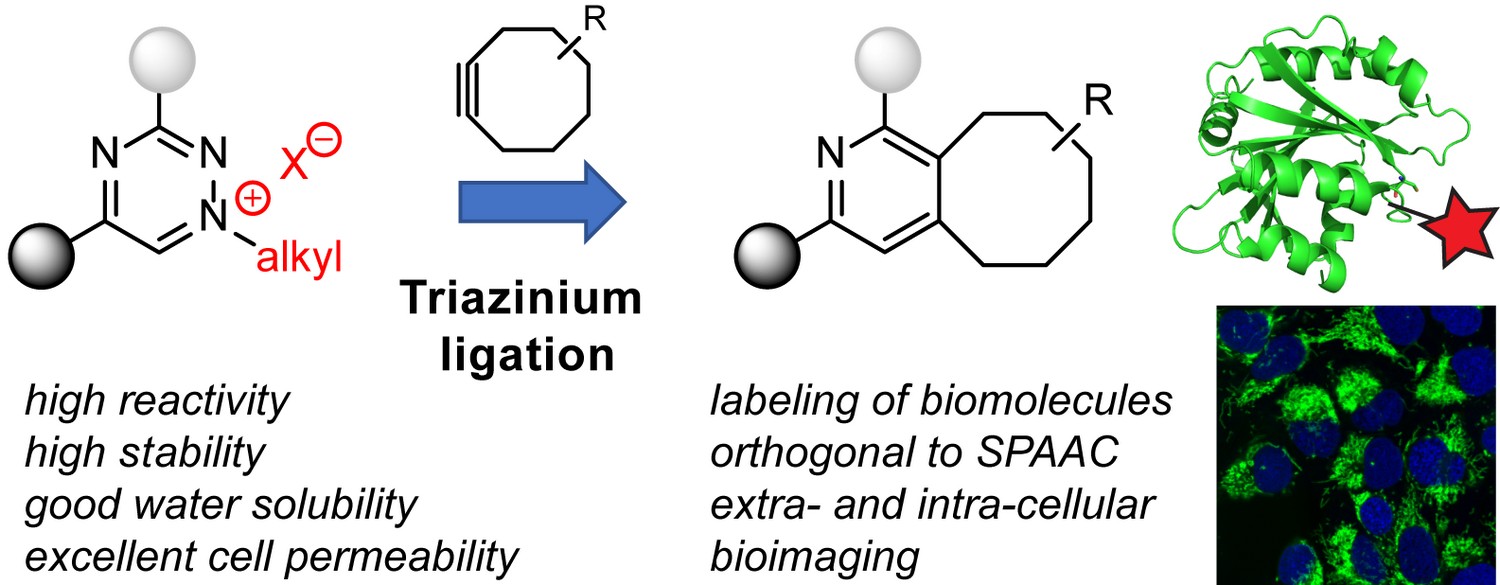New chemical reaction will allow to better target drugs in the human body and suppress their side effects

A research team from IOCB Prague, under the leadership of Milan Vrábel, has developed a new chemical reaction that will allow scientists to better target drugs to specific places in the human body and to monitor if their active compounds reach unintended tissues. This can help eliminate the unwanted side effects of therapy.

The completely new bioorthogonal, or biocompatible reaction promises significant advances in the art of targeting drugs to selected locations in the body, such as a cancerous tumor. Thanks to this reaction, called triazinium ligation, it is possible to modify biomolecules, such as proteins or peptides, so that they reach, together with a therapeutic substance, the desired tissue. The reagents developed by IOCB scientists boast many interesting properties. They are stable in the body, operate very quickly, and are brilliantly soluble.
‘We hope that this method will allow us to, for example, label different drugs in live cell cultures and thus better understand their action and the mechanism of it,’ says Milan Vrábel, the head of the Chemistry of Bioconjugates research group. His current work builds on research for which he received a prestigious ERC grant in 2016, as part of which he and his team have already used bioorthogonal reactions successfully.


The potential of this discovery, published in the scientific journal Angewandte Chemie, is wide. On this basis, experts get a chance not only to transport drugs where they are needed but also to monitor how they work in cells. Via the new chemical reaction, a fluorescent label, distinctly visible under a microscope, can be appended to an active compound. The illuminated therapeutic then makes it possible to easily see if it has reached any undesired places in the body. The drug can be altered by further adjustment at the molecular level so that it stays only in designated places and its side effects are reduced or eliminated.
What's more, scientists from IOCB Prague are already working on a new generation of reagents that will light up drugs only at the exact locations researchers focus on rather than making them glow over their whole journey through the cellular environment. ‘Indeed, our results look promising, and we look forward to using our method in future studies. Triaziniums are just great!’ adds Veronika Šlachtová, the first author of the study.
[with English captions]
Several years ago, Milan Vrábel received not only the mentioned ERC Starting grant, but the European Commission decided to give twofold support to his research work. The reason was that the initial research went in an unforeseen direction which could be of fundamental importance to society. It leads to a novel and more effective method of treating viral diseases as well as to the improvement of cancer immunotherapy. This research was supported by the EC with a financial injection associated with an ERC Proof of Concept grant.
Original article
- Šlachtová, V.; Bellová, S.; La-Venia, A.; Galeta, J.; Dračínský, M.; Chalupský, K.; Dvořáková, A.; Mertlíková-Kaiserová, H.; Rukovanský, P.; Dzijak, R.; Vrabel, M. Triazinium Ligation: Bioorthogonal Reaction of N1-Alkyl 1,2,4-Triazinium Salts. Angew. Chem. Int. Ed. 2023, n/a, e202306828. https://doi.org/10.1002/anie.202306828







